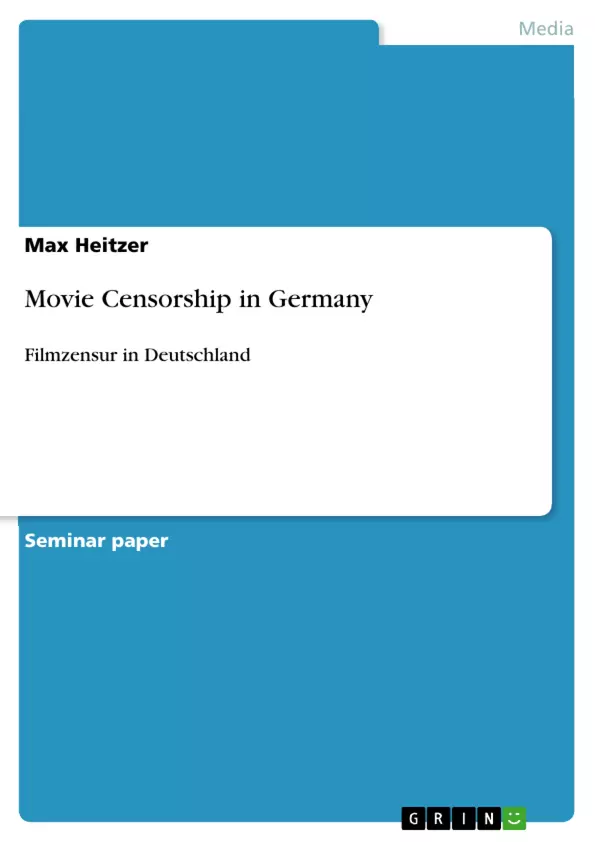Although article 5 of the German constitution says that ”There shall be no censorship.“ and ”Art [...] shall be free.“ the reality looks different. Mainly movies and especially the horror genre often have problems with their aimed rating before they are published.
In spite of an existing prohibition of censorship movies are cut down to be less harmful to youngsters and children although they are only suitable for adults anyway. But how does this procedure work? Which laws restrict the constitution and when are they applied?
After a short definition of the word censorship, an introduction of the most important institutions and a view of the general censorship situation in Germany this term paper shall make clear that:
Movie censorship is not necessary (in Germany).
Table of Contents
- Thesis
- Censorship
- A definition
- History of movie censorship
- Relevant companies for movie censorship
- FSK
- FSK ratings
- SPIO
- SPIO ratings
- BPjM
- §131 StGB: Representation of violence
Objectives and Key Themes
This term paper aims to critically examine the practice of movie censorship in Germany. The paper will analyze the relevant laws, institutions, and rating systems that govern the release of movies, particularly focusing on the horror genre. The objective is to demonstrate that, despite the constitutional guarantee of freedom of expression, movie censorship is unnecessary and, in many cases, counterproductive.
- The constitutionality of movie censorship in Germany
- The legal framework for regulating media content, particularly in relation to youth protection
- The role of various organizations, including the FSK, SPIO, and BPjM, in the censorship process
- The impact of censorship on the availability and distribution of horror movies
- The tension between artistic freedom and the need for societal protection
Chapter Summaries
The first chapter introduces the paper's thesis, outlining the paradox of movie censorship in Germany despite constitutional guarantees of freedom of expression. The second chapter provides a definition of censorship, highlighting its historical origins and evolution in the context of media regulation. It also explores the concept of pre-, post-, and self-censorship.
Chapter 2.2 delves into the history of movie censorship in Germany, tracing its roots to the 1950s and its intensification in the 1980s with the advent of videotapes. This section explores the concerns surrounding the accessibility of controversial movies to young audiences. The paper then outlines the relevant companies involved in movie censorship, including the FSK, SPIO, and BPjM.
Chapter 3.1 provides a detailed overview of the FSK, its purpose, and its rating system. It discusses the various ratings, with specific emphasis on FSK 16 and FSK 18 ratings, relevant to the horror genre. Chapter 3.2 explores the SPIO and its role in rating movies that have been deemed too explicit by the FSK. It examines the different SPIO ratings and their implications for the distribution and accessibility of movies.
Chapter 3.3 sheds light on the BPjM, its mandate, and its methods for protecting youth from potentially harmful media content. The paper explores the legal basis for the BPjM's actions and how it utilizes §131 StGB (Criminal Code) to address concerns related to the representation of violence in movies.
Keywords
This term paper examines the multifaceted issue of movie censorship in Germany. The core keywords include: movie censorship, freedom of expression, constitutionality, youth protection, FSK, SPIO, BPjM, JuSchG, §131 StGB, horror genre, artistic freedom, media regulation, and societal protection.
- Arbeit zitieren
- Max Heitzer (Autor:in), 2013, Movie Censorship in Germany, München, GRIN Verlag, https://www.grin.com/document/267528



